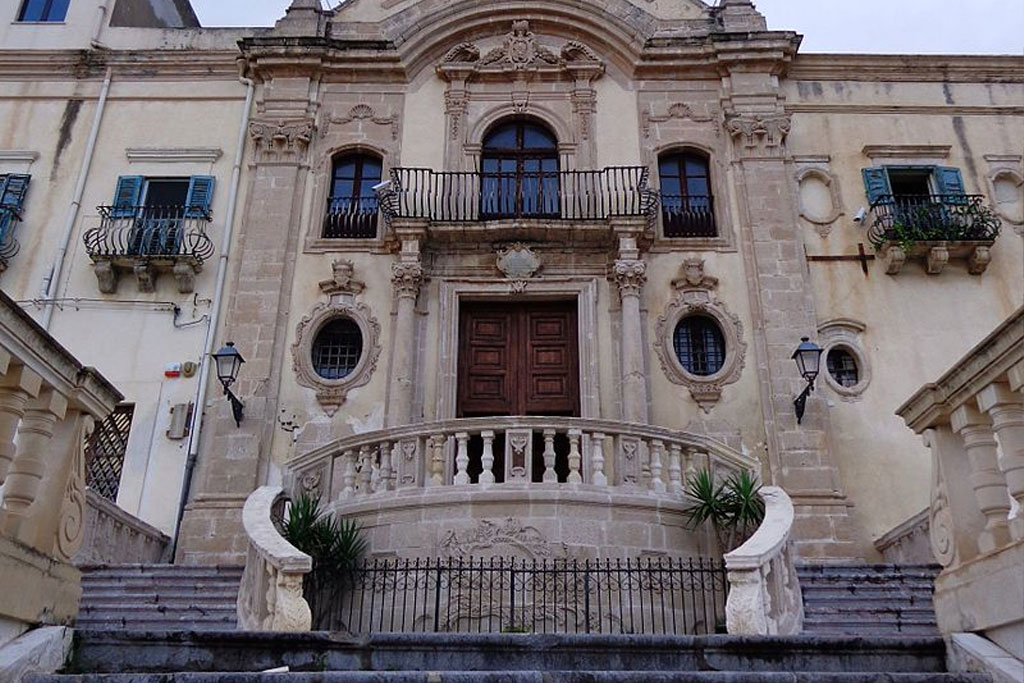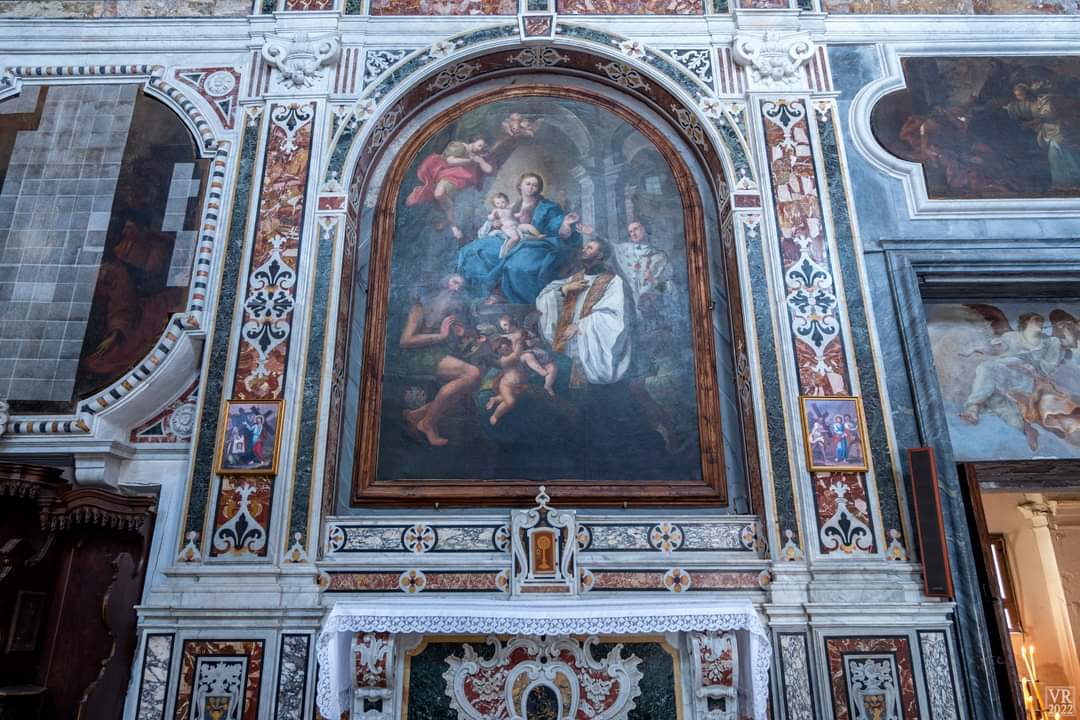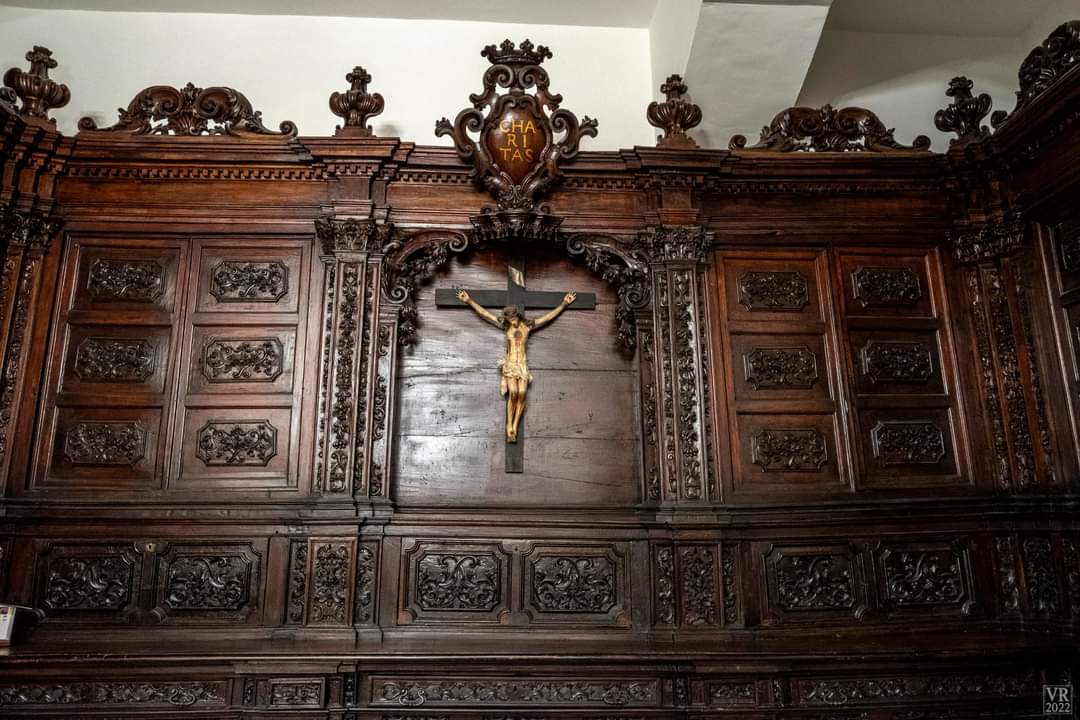0:00
/
0:00
Listen
It was built by the same Saint on the site of an ancient church of S. Biagio dei Ragusei, during his residence in Milazzo from January 1465 and dedicated to Jesus and Mary.
The current layout is the result of successive renovations, especially following the siege of 1718.
The facade, in pink stone of Syracuse, is baroque style and two columns with Corinthian capitals support the wrought iron balcony. On top of it a large Charitas coat of arms with rays. At the sides open windows with fanciful ornamented rococo. It was radically restored in the eighteenth century with a scenographic staircase where we find the statue of S. Francesco di Paola, made in 1760.
The convent, adjacent to the sanctuary, has been partly used as a school in past years, and partly still today, at the headquarters of the Carabinieri. The northern entrance (towards the Castle) is from 1600 with decorations of 1700; the one to the east (in the Levant) enters the ground floor of the cloister, as old as the church.


The two left altars instead see the first characterized by an arched altarpiece of ‘700 that depicts St. Francis Xavier with the Madonna, St. Onofrio and St. John Nepomuceno, the second a Chapel dedicated to Jesus and Mary entirely covered with rococo decoration of carved and gilded wood on mirrors that has, Inside, a niche in which is placed a small alabaster sculpture of the Madonna with Child. They alternate marble panels containing six canvases depicting episodes of the life of the Saint.
The high altar, commissioned in 1751 by Baron Paul Lucifer (whose coat of arms is placed at the two ends of the altar), is adorned with two allegorical marble sculptures: Hope and Faith. The upper niche, which contains the effigy of St. Francis, is the work of 1916 by Gaetano Recovery and occupies the place of the painting of the Saint, destroyed in the fire of 10 May 1908, where they were lost also high works that enriched the sanctuary. The fourteen stalls of the walnut choir that surrounds the high altar date back to 1759-60. Imposing the chancel, built in 1760, inside which finds place the organ and overlaid by the famous beam of the miracle.


The sacristy houses a beautiful baroque furniture in walnut of 1693, a washbasin in polychrome marbles of elegant workmanship and a wooden crucifix from the seventeenth century. In the treasure of the sanctuary: a reliquary from 1772 with the Berrettella del Santo, donated in 1518 by the French Father Francesco Cerdonis, V General of the Minima; a reliquary with a piece of the cloak of St. Francis (18th century); calici, monstrance and incense of the same design; five gold-embroidered palisades and plates from the seventeenth and eighteenth centuries and two wooden crucifixes. Also important are the numerous sepulchral monuments on the walls and the crypt with stucco altar where were placed the remains of Father Francesco Cerdonis (1518), mentioned above, and Angela Leonte (1559), a Tertiary virgin who died in the fame of holiness. To remember the adjacent convent that gave hospitality to eminent figures including the Viceroy Ettore Pignatelli (early twenties of ‘500), the Prince Emanuele Filiberto of Savoy, the Viceroy Philip II of Spain (1622) and, in 1678, Ludovico Fernandez Portocarrero, Cardinal, Archbishop of Toledo; in one of the rooms on the ground floor of the aforementioned convent was found, in the thirties of the last century, an important mosaic of Hellenistic – Roman (II sec. BC), evidence of the existence in that area of a public building or a noble villa of some merit.